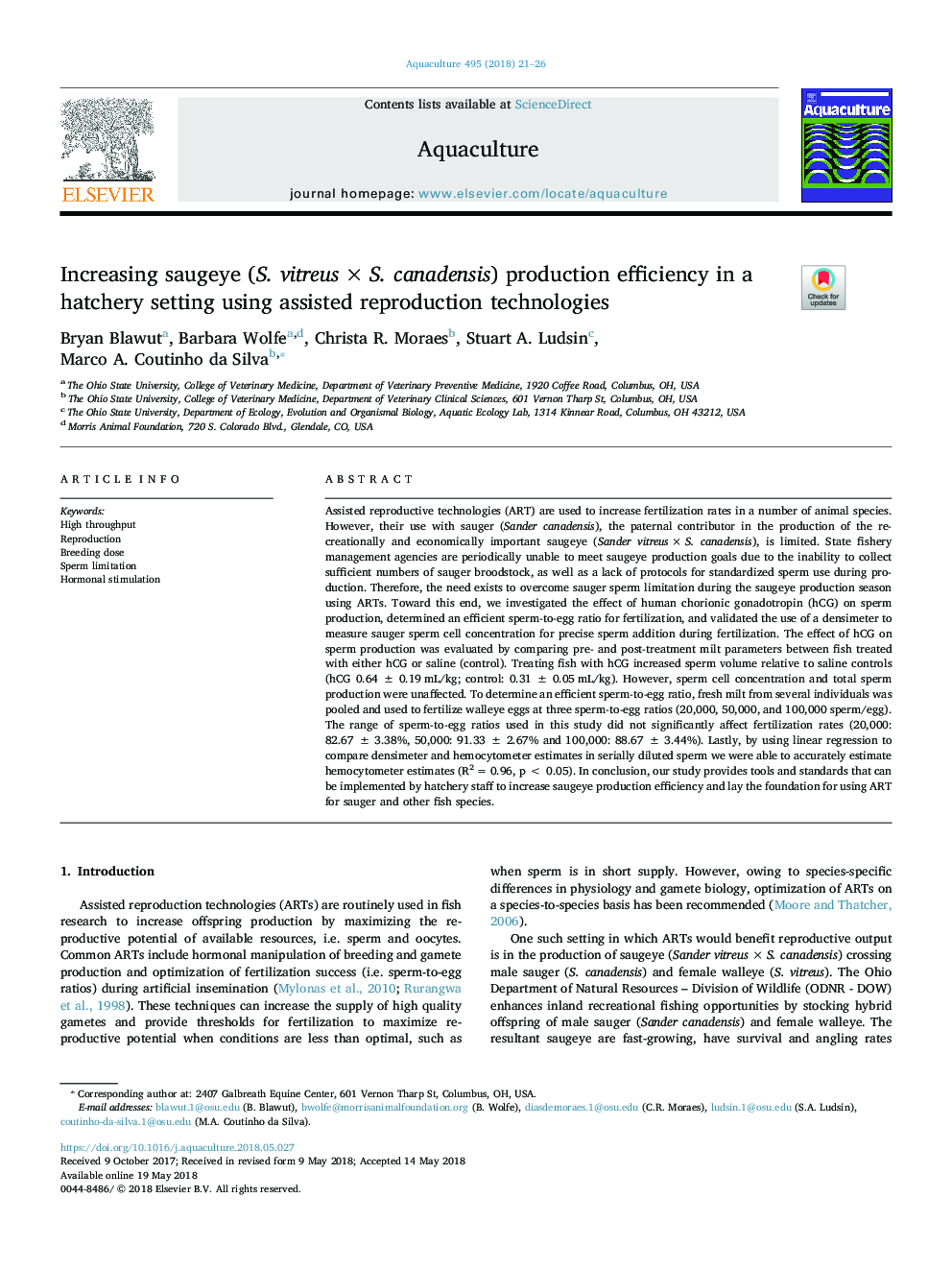| کد مقاله | کد نشریه | سال انتشار | مقاله انگلیسی | نسخه تمام متن |
|---|---|---|---|---|
| 8493089 | 1552793 | 2018 | 6 صفحه PDF | دانلود رایگان |
عنوان انگلیسی مقاله ISI
Increasing saugeye (S. vitreusâ¯Ãâ¯S. canadensis) production efficiency in a hatchery setting using assisted reproduction technologies
دانلود مقاله + سفارش ترجمه
دانلود مقاله ISI انگلیسی
رایگان برای ایرانیان
کلمات کلیدی
موضوعات مرتبط
علوم زیستی و بیوفناوری
علوم کشاورزی و بیولوژیک
علوم آبزیان
پیش نمایش صفحه اول مقاله

چکیده انگلیسی
Assisted reproductive technologies (ART) are used to increase fertilization rates in a number of animal species. However, their use with sauger (Sander canadensis), the paternal contributor in the production of the recreationally and economically important saugeye (Sander vitreusâ¯Ãâ¯S. canadensis), is limited. State fishery management agencies are periodically unable to meet saugeye production goals due to the inability to collect sufficient numbers of sauger broodstock, as well as a lack of protocols for standardized sperm use during production. Therefore, the need exists to overcome sauger sperm limitation during the saugeye production season using ARTs. Toward this end, we investigated the effect of human chorionic gonadotropin (hCG) on sperm production, determined an efficient sperm-to-egg ratio for fertilization, and validated the use of a densimeter to measure sauger sperm cell concentration for precise sperm addition during fertilization. The effect of hCG on sperm production was evaluated by comparing pre- and post-treatment milt parameters between fish treated with either hCG or saline (control). Treating fish with hCG increased sperm volume relative to saline controls (hCG 0.64â¯Â±â¯0.19â¯mL/kg; control: 0.31â¯Â±â¯0.05â¯mL/kg). However, sperm cell concentration and total sperm production were unaffected. To determine an efficient sperm-to-egg ratio, fresh milt from several individuals was pooled and used to fertilize walleye eggs at three sperm-to-egg ratios (20,000, 50,000, and 100,000 sperm/egg). The range of sperm-to-egg ratios used in this study did not significantly affect fertilization rates (20,000: 82.67â¯Â±â¯3.38%, 50,000: 91.33â¯Â±â¯2.67% and 100,000: 88.67â¯Â±â¯3.44%). Lastly, by using linear regression to compare densimeter and hemocytometer estimates in serially diluted sperm we were able to accurately estimate hemocytometer estimates (R2â¯=â¯0.96, pâ¯<â¯0.05). In conclusion, our study provides tools and standards that can be implemented by hatchery staff to increase saugeye production efficiency and lay the foundation for using ART for sauger and other fish species.
ناشر
Database: Elsevier - ScienceDirect (ساینس دایرکت)
Journal: Aquaculture - Volume 495, 1 October 2018, Pages 21-26
Journal: Aquaculture - Volume 495, 1 October 2018, Pages 21-26
نویسندگان
Bryan Blawut, Barbara Wolfe, Christa R. Moraes, Stuart A. Ludsin, Marco A. Coutinho da Silva,